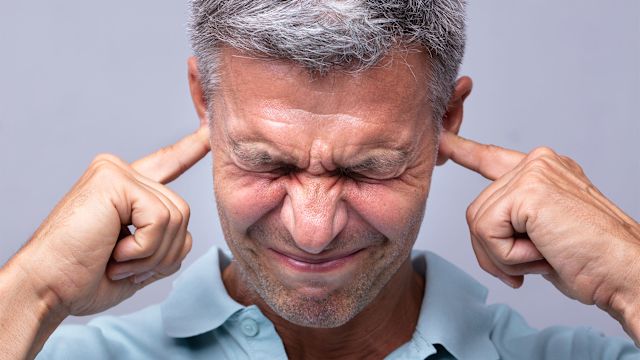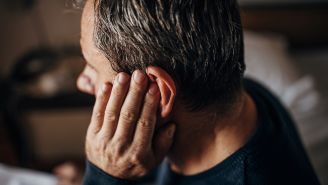Updated on September 5, 2024.
The modern world is a noisy place: the shriek of ambulance sirens, the blare of the television, the jackhammer of construction. Yet as loud or irritating as they may be, noises like these are often so common they seem to fade into the background.
The problem is that loud sounds can have a serious and permanent effect on hearing. The Centers for Disease Control and Prevention (CDC) estimates that 17 percent of Americans ages 20 to 69—roughly 26 million people—have noise-induced hearing loss (NIHL).
"NIHL is the second most common cause of hearing loss, right behind age-related hearing loss," says Joseph Seymour, MD, an otolaryngologist in Ypsilanti, Michigan. "It's a very frequently encountered problem."
How does noise-induced hearing loss occur?
NIHL can be the result of long-term exposure to loud sounds, such as a daily ride on a tractor or headphones worn at high volume for hours on end. Your hearing can also be damaged by what’s known as an “impulse” noise, an extremely loud, one-time sound, such as an explosion or a gunshot.
The good news: Noise-induced hearing loss is preventable, as long as you follow some strategies to safeguard your ears.
Why are loud noises problematic?
Hearing is an extremely complicated function—and it’s also surprisingly fragile.
Thousands of tiny hair cells inside your ears perform the vital role of translating sound waves into electrical signals. Then, they relay those signals to your brain, where they are perceived as sound. Very loud noises can harm, or even destroy, those cells.
"Noise-induced hearing loss is a cellular injury within your inner ear from increased volume and pressure," explains Dr. Seymour. "The cells within the inner ear are different from skin cells. They do not regrow. Once they're gone, they're gone for good.”
And it’s not just those tiny yet essential cells that can be damaged by loud noises. The auditory nerve, responsible for moving electrical signals to the brain, can also be harmed.
What factors contribute to NIHL?
When it comes to understanding your risk levels for NIHL, there are three key factors to keep in mind:
How loud is the sound?
You may be surprised by what qualifies as "loud." Noise levels are measured in decibels (dBA). For context, a personal listening device, like a smartphone with earphones, can crank as high as 100 dBA, well past safe listening levels. The higher the decibel level, the less time you can safely listen to a sound at that volume.
If you’re not used to thinking of sounds in terms of decibels (and most of us are not), here are the levels of some everyday sounds, according to the American Speech-Language-Hearing Association (ASHA):
- Conversation with friends, a dish washing machine: These noises are around 60 dBA and are safe for your hearing for any amount of time. So, go ahead and talk (or wash dishes) all day.
- Subways or passing motorcycles: Measured at 91 dBA, this level of noise presents risk to your hearing. The ASHA advises wearing hearing protection.
- Headphones at maximum volume, a food processor, a snow blower: At 94 to 112 dBA, these noises are “extremely loud” and dangerous to your hearing.
- Sirens, a plane taking off, jackhammering: These noises—ranging from 120 to 130 dBA—typically last for more than a few seconds but are considered unsafe for any amount of time.
- Firearms, firecrackers: These are “impulse” noises, measured in decibel peak pressure (dBP). At levels of 140 to 150 dBP, any period of exposure to these sounds can cause instant, irreparable damage to hearing.
What’s your proximity?
A siren that’s half a mile away is not as problematic as one blaring outside your window. How close you are to a loud noise will determine how harmful it is to your hearing.
What’s the duration?
As the decibels climb, the amount of time you can safely listen to the sound falls dramatically. At 85 dBA, you can listen for eight hours. At 88 dBA, that safe listening span shrinks to four hours; at 91 dBA, it drops to two hours. (The rule of thumb is that safe exposure time is halved with every 3 dBA increase in volume over 85 dBA.) A single second of an impulse noise, meanwhile, can result in permanent hearing loss.
A simpler rule, according to Seymour: "Less noise equals better hearing."
Know the signs of NIHL
The two most common symptoms of noise-induced hearing loss are an inability to hear and tinnitus, a ringing or buzzing in the ears, says Seymour. Some other tip-offs include:
- Frequently asking people to repeat themselves
- Difficulty hearing when there is background noise
- Needing to steadily increase the volume on your television or headphones
- Sounds being distorted or seeming muffled
NIHL is completely preventable
Avoiding all loud noises is hard to do, but it’s worth reducing your exposure as much as possible. If you work in a loud environment, such as a manufacturing plant, your employer must follow certain guidelines, says Seymour. The Occupational Safety and Health Administration (OSHA) requires employers to provide hearing protection when decibels exceed 85, as averaged over eight working hours.
You can also follow these general strategies to reduce your exposure to loud noises and protect your hearing:
Measure it
Download the NIOSH Sound Level Meter App to track the decibels of noise around you. It’s available for free from the National Institute for Occupational Safety and Health (NIOSH).
Inform yourself
Get a sense for what types and levels of noise can cause damage to your hearing. If you’re in a place where people are conversing in shouts to be heard, the noise level is probably posing a threat to your ears.
Avoid noise when possible
If you can, stay away from situations and places where loud noises occur. If you can't avoid them completely, take breaks. Remember, the duration of your exposure is a factor, as well as the noise's volume. If possible, position yourself at loud events as far from the source as possible.
"Every time you go to a concert and leave with a little ringing in the ears or muffled hearing, you've experienced what we call a 'temporary threshold shift,'" says Seymour. "That means that your hearing levels have actually changed."
While this change is apparent for only a few hours, evidence suggests that people who have many temporary threshold shifts experience worsening hearing over time, Seymour explains. In other words, your hearing may seem to go back to normal the day after the concert, but it's possible that permanent damage has occurred.
Use protection
Stuffing cotton balls in your years won’t get the job done. Instead, use earplugs that fit into your ear canal or snugly-fitting earmuffs that cover your ears completely. For the loudest noises—such as those higher than 105 dBA lasting eight or more hours, or impulse sounds higher than 140 dBP—use earplugs and earmuffs together.
"Even if you're using the lawnmower for an hour or two, it gets loud enough that you can cause an injury," says Seymour.
Turn it down
Resist the urge to increase the volume on your television, headphones, and other controllable audio outputs in your life.
Be smart with headphones
Seymour recommends patients follow what he calls the rule of 60: Cap your headphone use at 60 percent of the device's volume capacity for no more than 60 minutes. When you do listen alone, try to use over-the-ear headphones instead of earbuds, which can be up to 9 dBA louder.
If you are routinely exposed to loud noise, it's wise to get your hearing checked regularly, especially if you suspect hearing loss. Early detection can help you identify a situation that's causing damage and avoid it in the future. Consulting with a trained professional like an audiologist or otolaryngologist can also determine whether you may need to wear hearing aids.






